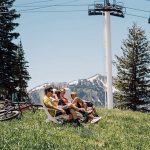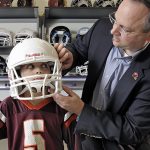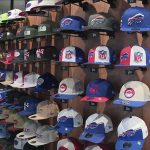The National Shooting Sports Foundation called a 3.6% rise in paid hunting license holders for 2009 “one of the most encouraging signs for hunting in recent years.”
“This is great news for our industry and everyone associated with hunting,” said Steve Sanetti, president and CEO of the National Shooting Sports Foundation. “Many efforts are at work to build hunting participation, and they are paying off. More people are enjoying the outdoors and sharing the tradition of hunting with family and friends. Also, more hunting license sales translate into more funds for wildlife conservation.”
U.S. Fish and Wildlife Service last week reported a total of 14,974,534 paid license holders for 2009, the largest figure since 2002 and an increase of 526,494 over 2008. The 3.6% rise in paid license holders represents the largest year-over-year increase since 1974. (A “paid license holder” is one individual regardless of the number of licenses purchased.)
NSSF cites several reasons for the increase, ranging from programs launched by many state wildlife agencies over the last decade to increase hunting participation to a difficult economy that motivated hunters to fill their freezers with game rather than store-bought meat. Also, hunters who were among the unemployed or had their work hours reduced used some of their free time to go hunting.
Coordinated efforts of state wildlife agencies, conservation organizations and the firearms industry appear to have halted a decades-long decline in hunting license sales, which since 2005 have held at the 14.5-million level until the jump in 2009. NSSF has played a key role promoting hunting participation with its programs and websites. Through its Hunting Heritage Partnership program, NSSF has provided state agencies with $3.8 million to fund initiatives designed to encourage hunting among all age groups. Also, through Families Afield, a partnership effort of NSSF, the U.S. Sportsmen's Alliance and National Wild Turkey Federation started in 2004, thirty states have made it easier for youth to begin hunting at a younger age with licensed adults.
“Due to continued urbanization and changes in our culture, hunting will face significant challenges for the foreseeable future, but at the same time hunting remains an extremely important activity in the lives of millions of Americans, as the latest hunting licenses sales figures confirm,” said Sanetti.
NSSF points out that the actual number of hunters who go afield in any given year is greater than the total of paid hunting license holders in that year. U.S. Fish and Wildlife Service figures do not account for certain state exemptions for purchasing a hunting license. Many states allow landowners and active military to hunt without purchasing a license; also, lifetime license holders and youth hunters who do not fall within the required license purchasing age are not included in the figures.
According to an NSSF-funded study carried out by Southwick Associates, the pool of hunters in America is much larger than previously thought. The study, released last fall, estimated that 21.8 million people purchased a hunting license at least once in the last five years.
NSSF said hunters are the “backbone of conservation funding in America,” contributing more than $1 billion each year through the purchase of licenses, tags, permits and stamps and through excise taxes paid on firearms and ammunition. For example, proceeds from the sale of Federal Duck Stamps, a required purchase for migratory waterfowl hunting, have purchased more than 5 million acres of habitat for the National Wildlife Refuge System.
NSSF, using its new 12-state hunting license sales index, anticipated the national increase in paid hunting license holders by reporting a 3.5% increase in license sales last spring. “It's gratifying to see how accurate our state index was, which gives us confidence in future index-based hunting license sales figures,” said Jim Curcuruto, NSSF's director of industry research and analysis.
NSSF will announce its state index hunting license sales report for 2010 this spring.









